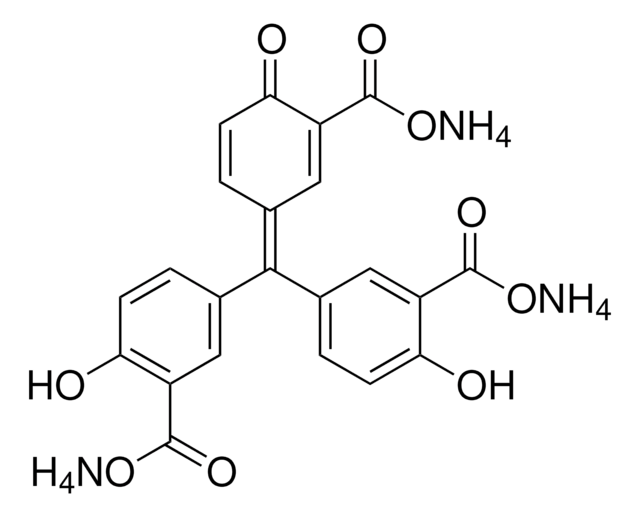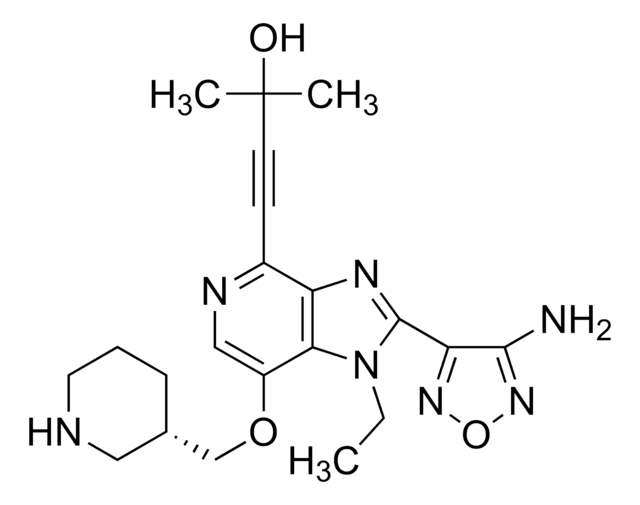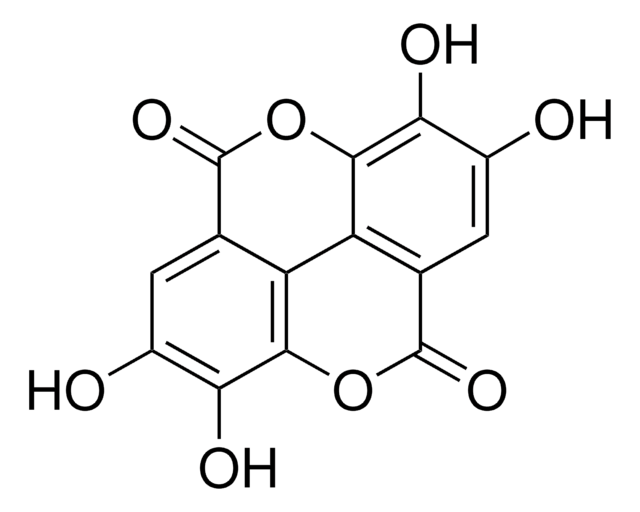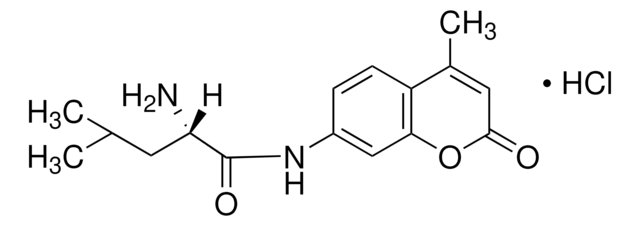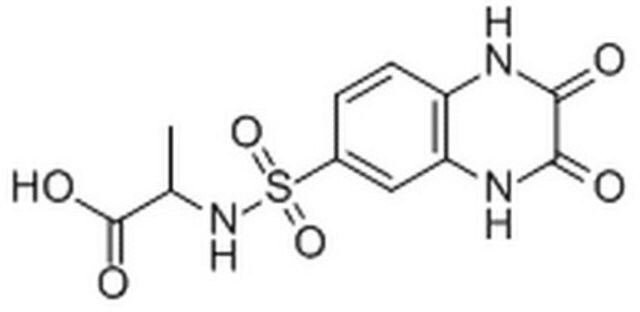189400
Aurintricarboxylic Acid
A cell-permeable polyanionic, polyaromatic compound used as a powerful inhibitor of cellular processes that are dependent on the formation of protein-nucleic acid complexes.
Synonyme(s) :
Aurintricarboxylic Acid, ATA
About This Item
Produits recommandés
Niveau de qualité
Pureté
≥85% (titration)
Forme
solid
Fabricant/nom de marque
Calbiochem®
Conditions de stockage
OK to freeze
Couleur
red
Solubilité
0.1 M NaOH: 35 mg/mL
Conditions d'expédition
ambient
Température de stockage
10-30°C
InChI
1S/C22H16O9.3H3N/c23-16-4-1-10(7-13(16)20(26)27)19(11-2-5-17(24)14(8-11)21(28)29)12-3-6-18(25)15(9-12)22(30)31;;;/h1-10,19,24-25H,(H,26,27)(H,28,29)(H,30,31);3*1H3
Clé InChI
UDPQMNAHKKTHHI-UHFFFAOYSA-N
Description générale
Actions biochimiques/physiologiques
DNA topoisomerase 2
Avertissement
Reconstitution
Autres remarques
Benchokroun, Y., et al. 1995. Biochem. Pharmacol.49, 305.
Okada, N., and Koizumi, S. 1995. J. Biol. Chem.270, 16464.
Posner, A., et al. 1995. Biochem. Mol. Biol. Int. 36, 291.
Catchpoole, D.R., et al. 1994. Anticancer Res. 14, 853.
Csernansky, C.A., et al. 1994. J. Neurosci. Res. 38, 101.
Gagliardi, A.R., and Collins, D.C. 1994. Anticancer Res. 14, 475.
Gonzalez, R.G., et al. 1980. Biochemistry19, 4299.
Informations légales
Code de la classe de stockage
11 - Combustible Solids
Classe de danger pour l'eau (WGK)
WGK 3
Point d'éclair (°F)
Not applicable
Point d'éclair (°C)
Not applicable
Certificats d'analyse (COA)
Recherchez un Certificats d'analyse (COA) en saisissant le numéro de lot du produit. Les numéros de lot figurent sur l'étiquette du produit après les mots "Lot" ou "Batch".
Déjà en possession de ce produit ?
Retrouvez la documentation relative aux produits que vous avez récemment achetés dans la Bibliothèque de documents.
Notre équipe de scientifiques dispose d'une expérience dans tous les secteurs de la recherche, notamment en sciences de la vie, science des matériaux, synthèse chimique, chromatographie, analyse et dans de nombreux autres domaines..
Contacter notre Service technique
